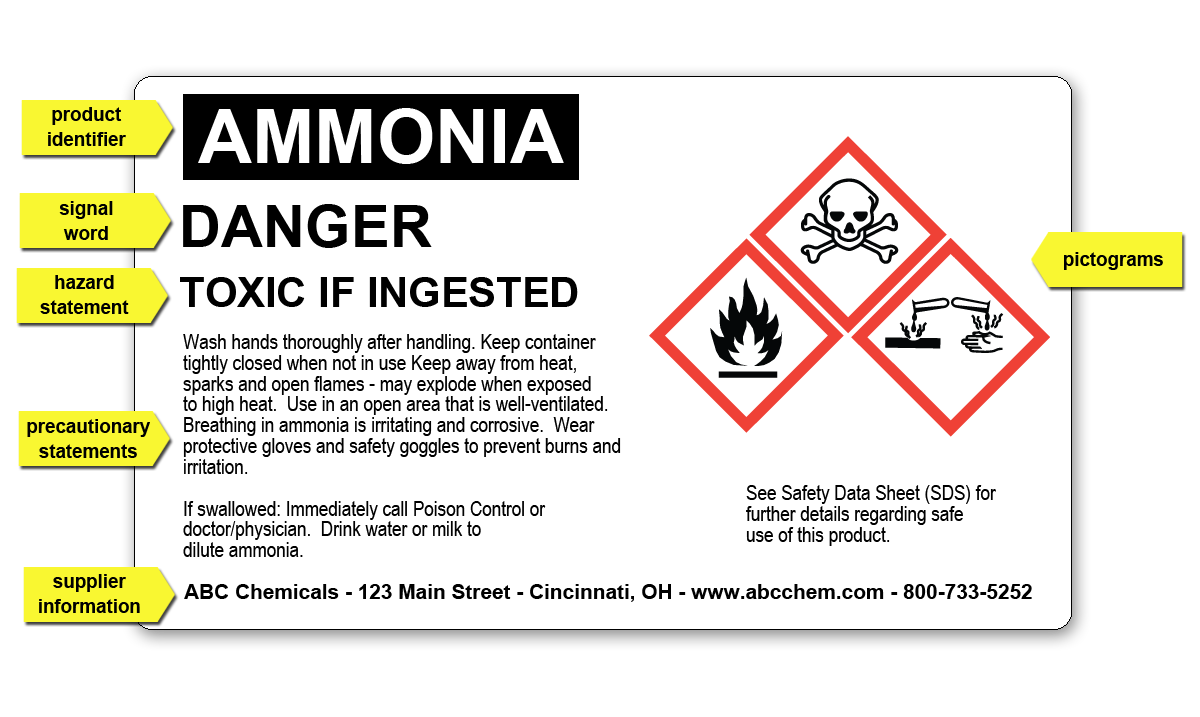GHS Labelling
For hazardous products being transported, outer containers have required label elements, product identifier and hazard symbols. All labeling on outermost containers required for transport should be done in addition to the GHS workplace labels. GHS guidelines also provide additional pictograms for hazard transport.
Globally Harmonized System (GHS)
What Are GHS Labels?
The regulations associated with the GHS of Classification and Labeling of Chemicals fundamentally changes the way that chemical products are labeled. As a manufacturer of chemical products, we are comply with the GHS labeling standards..
GHS Labels are designed to communicate dangerous and hazardous material using a universal standard of text and pictogram formats as indicated by the OSHA’s updated Hazard Communication regulations. Depending on the container being labeled, the labels may be required to utilize an approved facestock, ink and/or printing method.
All labels are required to have pictograms, a signal word, hazard and precautionary statements, the product identifier, and supplier identification.

What Are Hazard pictograms?
Hazard pictograms form part of the international Globally Harmonized System of Classification and Labelling of Chemicals (GHS).
Two sets of pictograms are included within the GHS:
1. For the labelling of containers and for workplace hazard warnings
2. For use during the transport of dangerous goods.
Either one or the other is chosen, depending on the target audience, but the two are not used together.
![]()
GHS01: Explosive
- Unstable explosives
- Explosives, divisions 1.1, 1.2, 1.3, 1.4, 1.5, 1.6
![]()
GHS02: Flammable
- Flammable gases, category 1
- Flammable aerosols, categories 1, 2
![]()
GHS03:Oxidizing
- Oxidizing gases, category 1
- Oxidizing liquids, categories 1, 2, 3
What Are Hazard statements ?
Each hazard statement is designated a code, starting with the letter H and followed by three digits. Statements which correspond to related hazards are grouped together by code number, so the numbering is not consecutive. The code is used for reference purposes, for example to help with translations, but it is the actual phrase which should appear on labels and safety data sheets.
Hazard statements form part of the Globally Harmonized System of Classification and Labelling of Chemicals (GHS). They are intended to form a set of standardized phrases about the hazards of chemical substances and mixtures that can be translated into different languages.
| Code | Phrase |
|---|---|
| H200 | Unstable explosive |
| H201 | Explosive; mass explosion hazard |
| H202 | Explosive; severe projection hazard |
| H203 | Explosive; fire, blast or projection hazard |
| H204 | Fire or projection hazard |
| H205 | May mass explode in fire |
What Are Precautionary statements?
Each precautionary statement is designated a code, starting with the letter P and followed by three digits. Statements which correspond to related hazards are grouped together by code number, so the numbering is not consecutive. The code is used for reference purposes.
Precautionary statements form part of the Globally Harmonized System of Classification and Labelling of Chemicals (GHS). They are intended to form a set of standardized phrases giving advice about the correct handling of chemical substances and mixtures, which can be translated into different languages. As such, they serve the same purpose as the well-known S-phrases, which they are intended to replace.
Prevention precautionary statements
| P201 | Obtain special instructions before use |
| P202 | Do not handle until all safety precautions have been read and understood. |
| P210 | Keep away from heat, hot surfaces, sparks, open flames and other ignition sources. No smoking. [As modified by IV ATP |
| P211 | Do not spray on an open flame or other ignition source. |
| P220 | Keep/Store away from clothing/…/combustible materials. [As modified by IV ATP] |
